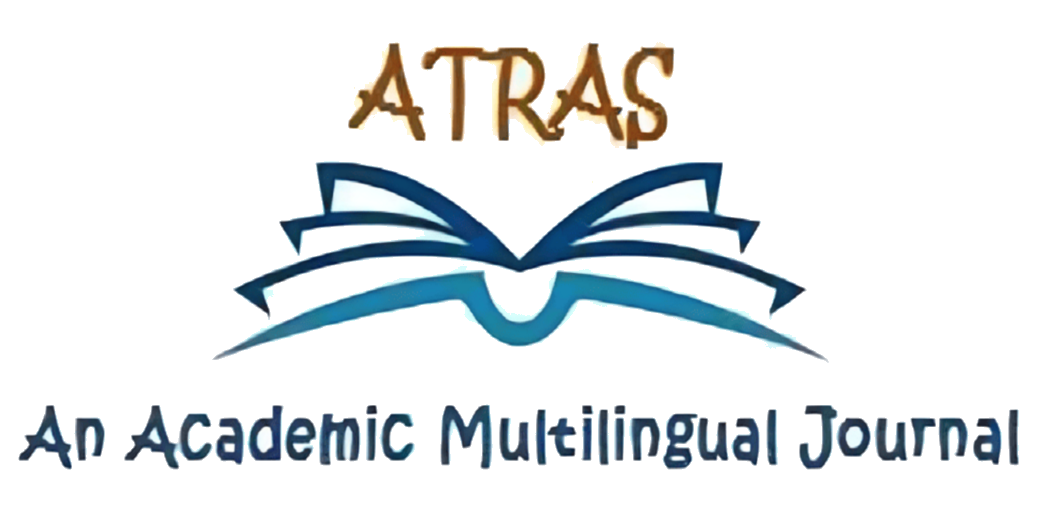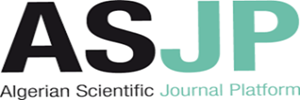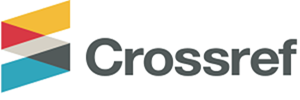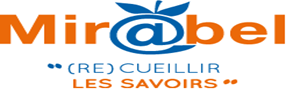Artificial Intelligence Applications in Higher Education: An Exploratory Study of Professors in Economic Sciences at the University of Médéa
Warda MOUSSAOUI
University of Médéa, Algeria
moussaoui.warda@univ-medea.dz
https://orcid.org/0000-0001-5354-427X
Imane HAYOULA
University of Médéa, Algeria.
hayoula.imane@univ-medea.dz
https://orcid.org/0009-0003-8460-2921
Abstract
This study aims to measure the level of artificial intelligence technology usage in higher education among university professors at the Faculty of Economic Sciences, Commercial Sciences, and Management Sciences at the University of Médéa. Using a descriptive-analytical approach, a survey was conducted with a sample of 71 professors, and the data was analyzed using SPSS statistical software. The findings revealed a moderate level of artificial intelligence usage, with an average score of 79.23. The main challenges identified were insufficient technical support and inadequate training. An independent samples t-test showed no significant differences in AI usage between male and female professors, nor across different levels of experience. The study recommends enhancing training programs, improving technical support, and fostering a culture of technological adoption.
Keywords: Artificial intelligence applications, higher education, university professors, Faculty of Economic Sciences, University of Médéa
DOI:
https://doi.org/10.70091/atras/AI.35
How to Cite this Paper :
Moussaoui, W., & Hayoula, I. (2024). Artificial Intelligence Applications in Higher Education: An Exploratory Study of Professors in Economic Sciences at the University of Médéa. Atras Journal, 5(Special Issue), 557-575
References:
Acosta-Enriquez, B. G. et al. (2024). Knowledge, attitudes, and perceived Ethics regarding the use of ChatGPT among Generation Z university students. International Journal for Educational Integrity, 20(1). DOI: 10.1007/s40979-024-00157-4
Al-Louzi, M. (2012). Artificial Intelligence in Business. 11th Annual Conference on Business Intelligence and Knowledge Economy. Amman, Jordan: Faculty of Economics and Administrative Sciences, Al-Zaytoonah University.
Alasmari, T. M., & Al-Zahrani, A. M. (2024). Exploring the impact of artificial intelligence on higher education: The dynamics of ethical, social, and educational implications. Humanities and Social Sciences Communications, 11(1), 1-12. DOI: 10.1057/s41599-024-03432-4
Ali, O. M. (1988). A Future Vision of the Role of Education and Scientific Research. Tal Sidar, Damascus, 100.
Angers, M. (2010). Research Methodology in the Humanities. Algeria: Dar Al-Qasba for Baena-Rojas, J., Castillo-Martínez, I., Mendez-Garduño, J., Suárez-Brito, P., & López-Caudana, E. (2023). Information communication technologies, artificial intelligence, and social robotics: a complex-thinking vector in higher education? Journal of Social Studies Education Research, 14(2), 21-50.From https://www.learntechlib.org/p/223022/
Bakhtaoui, B. (2022). The Reality of Artificial Intelligence Application and its Impact on Improving the Quality of Higher Education: University of Adrar as a Model. Economic Integration Journal,10(1), 241-254. https://www.asjp.cerist.dz/en/article/18727
Basheer, R. (2000). Educational Research Methods. Kuwait: Dar Al-Kitab.
Elbaraka, N.(2024). Artificial intelligence as a mechanism to improve e-learning: applications and challenges in higher education. Forum Journal for Economic Studies and Research, 8(1). https://www.asjp.cerist.dz/en/article/249595Quality Assurance in Higher Education AISBL.
Hanan, B., & Bouamouch, N. (2020). Validity and Reliability in Social Research. Journal of Studies in Human and Social Sciences, 2(3).
Hatem, S. (2011). Leadership Style and Its Relationship with Group Cohesion. Master’s Thesis. Algeria, Faculty of Humanities and Social Sciences: Constantine University.
Hershberger, P. J. et al. (2024). Motivational interviewing skills practice enhanced with artificial intelligence: ReadMI. BMC Medical Education, 24(1), 237, 1-8. DOI: 10.1186/s12909-024-05217-4
Jonald, P. (2010). A Note on the Usage of Likert Scaling for Research Data Analysis. Retrieved from https://www.researchgate.net/publication/331231816_A_note_on_the_usage_of_Likert_Scaling_for_research_data_analysis
Jo, H. (2024). From concerns to benefits: a comprehensive study of ChatGPT usage in education. International Journal of Educational Technology in Higher Education, 21(1), 35, 1-29. DOI: 10.1186/s41239-024-00471-4
Johnston, H., Wells, R. F., Shanks, E. M., Boey, T., & Parsons, B. N. (2024). Student perspectives on the use of generative artificial intelligence technologies in higher education. International Journal for Educational Integrity, 20(1), 2, 1-21. DOI: 10.1007/s40979-024-00149-4
Kamalov et al. (2023). New Era of Artificial Intelligence in Education: Towards a Sustainable Multifaceted Revolution. Sustainability, 15(16). doi:https://doi.org/10.3390/su151612451
Kiryakova, G., & Angelova, N. (2023). ChatGPT—A challenging tool for university professors in their teaching practice. Education Sciences, 13(10), 1056. DOI: 10.3390/educsci13101056
Khan, I., Abdul Rahim, A., Jabeur, N., & Mohammed najeh , M. (2021). An artificial intelligence approach to monitor student performance and devise preventive measures. Smart Learn. Environ, 8(17). doi:https://doi.org/10.1186/s40561-021-00161-y
Law No.99-20. (1999). Official Gazette No. 08. Algeria.
Luo, C., Mao, B., Wu, Y., & He, Y. (2024). The research hotspots and theme trends of artificial intelligence in nurse education: A bibliometric analysis from 1994 to 2023. Nurse Education Today, 106321. DOI: 10.1016/j.nedt.2024.106321
Ministry of Higher Education of the Kingdom of Saudi Arabia. (2013). The Third Function of Universities. Kingdom of Saudi Arabia: Publications of the Ministry’s Agency for Planning and Information. Retrieved from www.mohe.sa
Mohamed, A. H.-S. (2020). Cronbach’s Alpha for Verifying the Reliability of Measurement Tools Scores: Facts and Misconceptions Among Researchers. Journal of Scientific Research.
Nassoura, A. B. (2022). Applied Artificial Intelligence Applications In Higher Education Institutions: A Systematic Review. City University College of Ajman, 3(19), 1174-1177.
Ojeda, A. D., Solano-Barliza, A. D., Alvarez, D. O., & Cárcamo, E. B. (2023). Análisis del impacto de la inteligencia artificial ChatGPT en los procesos de enseñanza y aprendizaje en la educación universitaria. Formación universitaria, 16(6), 61-70. DOI: 10.4067/S0718-50062023000600061
Pedró, F. (2020). Applications of Artificial Intelligence to higher education: possibilities, evidence, and challenges. IUL Research Open Journal of IUL University, 1(1), 68-72.
Raja, A. A. (2006). Research Methods in Psychological and Educational Sciences (5 ed.). Egypt: Dar Al-Nashr lil-Jami’at.
Russell, S., & Norvig, P. (2022). Artificial Intelligence Amodern Approach (4 ed.). US Edition: PRENTICE HALL SERIES ,IN ARTIFICIAL INTELLIGENCE. Retrieved from https://dl.ebooksworld.ir/books/Artificial.Intelligence.A.Modern.Approach.4th.Edition.Peter.Norvig.%20Stuart.Russell.Pearson.9780134610993.EBooksWorld.ir.pdf
Luckin, R., Rudolph, J., Grünert, M., & Tan, S. (2024). Exploring the future of learning and the relationship between human intelligence and AI. An interview with Professor Rose Luckin. Journal of Applied Learning and Teaching, 7(1). DOI: 10.37074/jalt.2024.7.1.27
Sakri,Z., Chekirine,D..(2024). Artificial Intelligence’s Impact On Higher Education Quality. Journal of Science and Knowledge Horizons,4(1). https://www.asjp.cerist.dz/en/article/248282
Saleh, F. A. (2009). The Impact of Applying Artificial Intelligence and Emotional Intelligence on the Quality of Decision Making. a thesis submitted in partial fulfillment of the requirements for the Master’s degree in Management Sciences. Faculty of Economic and Commercial Sciences and Management Sciences: Middle East University for Graduate Studies.
Seo, K. (2021, December). The impact of artificial intelligence on learner–instructor interaction in online learning. International Journal of Educational Technology in Higher Education, 1(18). doi:10.1186/s41239-021-00292-9
Shaaban, A. A. (2021, April). Artificial Intelligence and Its Applications in Higher Education. pp. 14-17.
Yongjun Xu., e. a. (2021). Artificial intelligence: A powerful paradigm for scientific research. The Innovation, 2(4). doi:https://doi.org/10.1016/j.xinn.2021.100179
Yusuf, A., Pervin, N., & Román-González, M. (2024). Generative AI and the future of higher education: a threat to academic integrity or reformation? Evidence from multicultural perspectives. International Journal of Educational Technology in Higher Education, 21(1), 21. DOI: 10.1186/s41239-024-00471-4
Zerouati, R. (2002). Exercises on Research Methodology in Social Sciences. Algeria: Dar Houma.

Copyright for all articles published in ATRAS belongs to the author. The authors also grant permission to the publisher to publish, reproduce, distribute, and transmit the articles. ATRAS publishes accepted papers under the Creative Commons Attribution-NonCommercial 4.0 International (CC BY-NC 4.0) License. Authors submitting papers for publication in ATRAS agree to apply the CC BY-NC 4.0 license to their work. For non-commercial purposes, anyone may copy, redistribute material, remix, transform, and construct material in any media or format, provided that the terms of the license are observed and the original source is properly cited.







































































